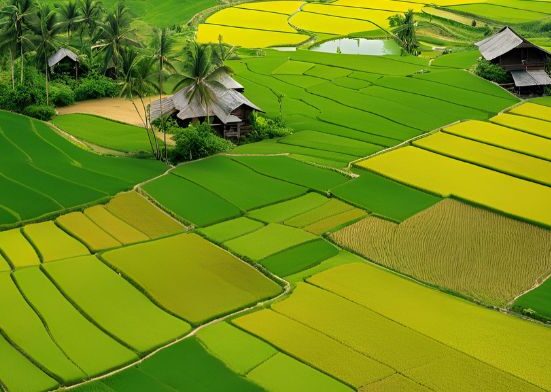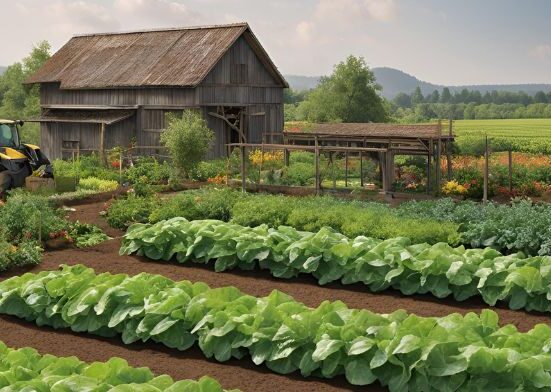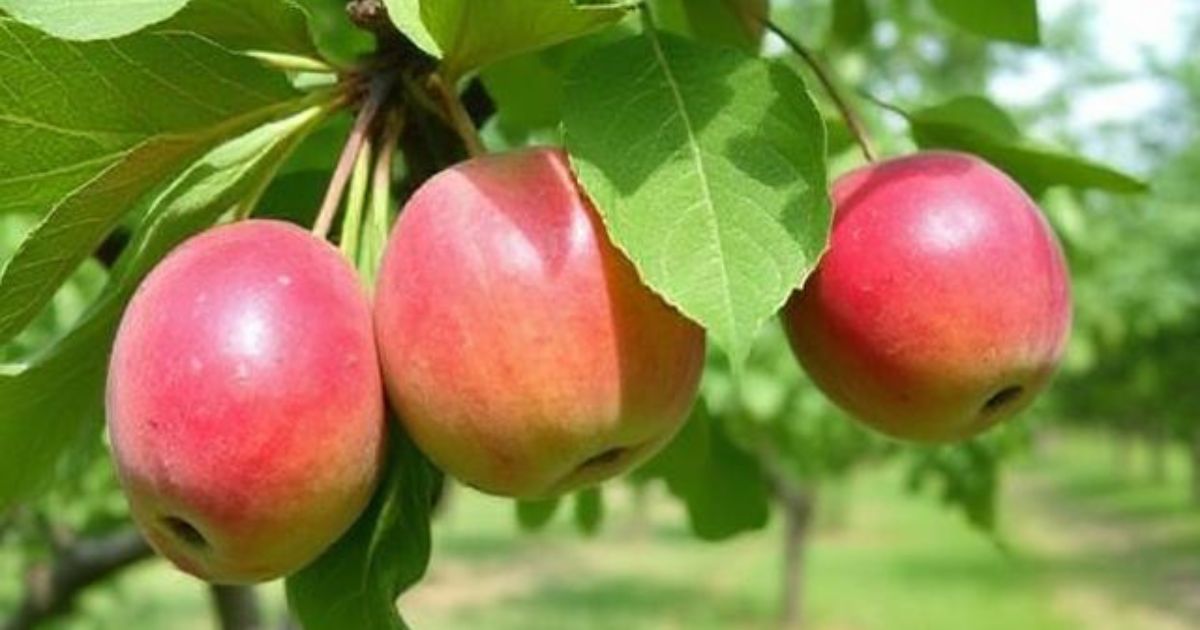Growing orchard trees is both an art and a science. Whether you’re a backyard gardener, a homesteader, or a commercial grower, orchard trees offer a wealth of rewards—from fresh, juicy fruits to long-term sustainability and even aesthetic landscape beauty. However, choosing the right trees and understanding how they grow under different conditions is crucial for success. In this guide, we’ll explore everything from types of orchard trees and climate compatibility to planting techniques, maintenance strategies, and comparative growth characteristics. By the end, you’ll be equipped to make informed decisions for a fruitful, flourishing orchard.
A Brief Definition of Orchard Trees
Orchard trees are specially cultivated fruit or nut trees planted systematically in designated areas called orchards. These trees are grown primarily for commercial fruit production or personal consumption. Unlike wild trees, orchard trees are carefully selected for their high yields, disease resistance, and superior fruit quality. Common orchard trees include apple, cherry, peach, pear, and citrus varieties. They require regular care, such as pruning, watering, and pest management, to ensure optimal growth and fruit yield. Orchards provide a managed environment that maximizes fruit quantity and quality, making orchard trees essential to agriculture and food supply chains apple orchard worldwide.
Importance of Growing Orchard Trees (economic, environmental, and personal benefits)
Growing orchard trees offers significant economic, environmental, and personal benefits. Economically, orchards provide valuable fruit crops that support local markets, create jobs, and contribute to agricultural income. Environmentally, orchard trees improve air quality, enhance biodiversity, act as carbon sinks, and help stop soil erosion, thereby mitigating climate change. On a personal level, tending orchard trees promotes physical activity, mental well-being, and access to fresh, nutritious fruit. Additionally, orchards strengthen community ties through shared harvests and sustainable farming practices.
What Are Orchard Trees?
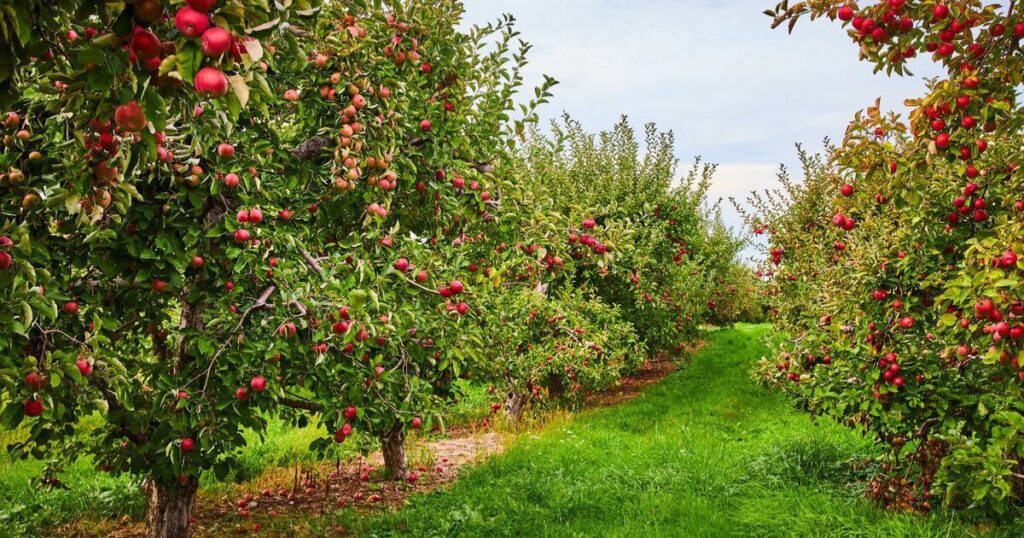 Orchard trees are fruit-bearing trees that are cultivated in a designated area called an orchard, primarily for agricultural production. These trees are grown in organized rows or patterns to facilitate maintenance, harvesting, and irrigation. Common examples include apples, pears, peaches, cherries, plums, apricots, and citrus trees. Orchard trees are carefully selected based on climate, soil conditions, and regional suitability to maximize yield and fruit how to blanch peaches quality.
Orchard trees are fruit-bearing trees that are cultivated in a designated area called an orchard, primarily for agricultural production. These trees are grown in organized rows or patterns to facilitate maintenance, harvesting, and irrigation. Common examples include apples, pears, peaches, cherries, plums, apricots, and citrus trees. Orchard trees are carefully selected based on climate, soil conditions, and regional suitability to maximize yield and fruit how to blanch peaches quality.
Unlike wild fruit trees, orchard trees are pruned and managed regularly to promote healthy growth, control pests and diseases, and improve fruit size and taste. Many orchards use grafting techniques to combine desirable rootstocks with high-yielding varieties. Orchard trees play a key role in commercial agriculture, home gardening, and sustainable food systems. They not only provide delicious fruits but also contribute to biodiversity, shade, and environmental sustainability. Whether small-scale or fruit orchard commercial, orchard trees are essential to fruit production What Is an Orchard worldwide.
Definition and Characteristics
Definition and Characteristics refer to the clear explanation of a concept or term along with its distinguishing features. The definition provides a precise meaning, outlining what something is, while the characteristics describe the essential qualities or traits that set it apart from others. Together, they help in understanding the nature, purpose, and function of the subject. Characteristics often include physical, behavioral, or functional attributes that are consistent and observable. This combined approach enhances clarity, enabling individuals to effectively identify, categorize, and differentiate the concept in various autumn harvesting contexts.
Types of Orchards (commercial, backyard, community)
Orchards come in various types, each serving unique purposes. Commercial orchards are large-scale operations that focus on growing fruit trees for mass production and sale, often employing advanced techniques to maximize yield and quality. Backyard orchards are smaller, personal gardens where homeowners grow fruit trees for family consumption, enjoyment, and sustainability. These are usually more diverse and less intensively managed. Community orchards are shared spaces managed collectively by neighborhood groups or organizations, promoting local food access, education, and community bonding. Together, these orchard types support fruit production, ranging from personal to commercial levels, enriching both the environment and the communities alike.
Benefits of Planting Orchard Trees (biodiversity, food security, etc.)
Planting orchard trees offers numerous benefits, including enhancing biodiversity by providing homes for beneficial insects, birds, and microbes. Orchards support ecosystem balance, promoting pollination and natural pest control. They significantly contribute to food security by producing fresh, nutritious fruits locally, thereby reducing reliance on imported produce. Orchard trees also enhance soil health through nutrient cycling and prevent erosion. Additionally, they help sequester carbon, mitigating climate change. Beyond environmental benefits, orchards enhance local economies and promote sustainable agricultural practices. Overall, planting orchard trees fosters healthier ecosystems, resilient food systems, and stronger communities.
Major Categories of Orchard Trees
Orchard trees are generally grouped into several major categories based on the type of fruit or nut they produce. The primary categories include pome fruits, such as apples and pears, which have a central core with seeds. Stone fruits, also known as drupes, include peaches, cherries, plums, and apricots—these have a single large seed or “stone” inside. Citrus fruits, including grapefruits, oranges, lemons, and limes, thrive in warmer climates and are prized for their juicy, vitamin-rich flesh. Nut trees such as almonds, walnuts, pecans, and hazelnuts are also essential in orchard systems, often grown in separate trees orchard groves.
Additionally, tropical and subtropical fruit trees, including mangoes, avocados, and bananas, are cultivated in suitable climates. Each category has unique growing requirements, harvest times, and commercial value. Understanding these distinctions helps in selecting, planting, and managing orchard trees effectively for both home and commercial production.
Temperate Climate Trees
Temperate climate trees thrive in regions with distinct seasons, including warm summers and cold winters. These trees have adapted to survive temperature fluctuations and varying rainfall patterns. Common examples include oak, maple, birch, and pine, which dominate temperate forests worldwide. They often shed leaves in autumn to conserve water and energy during winter’s cold dormancy. Temperate trees play a crucial role in ecosystems, sustaining a diverse array of species and enhancing the overall health of the soil. Their wood is valuable for timber, furniture, and paper products. Overall, temperate climate trees represent a vital natural resource, enhancing the beauty and balance of their tree orchard environments.
Tropical & Subtropical Trees
Tropical and subtropical trees thrive in warm climates with abundant sunlight and moderate to high humidity. These trees are often evergreen, featuring broad leaves that are well-adapted to capture sunlight efficiently. Common examples include mango, banana, coconut, and papaya trees, which produce a variety of fruits essential to diets worldwide. They play a crucial role in their ecosystems, maintaining the land’s health and supporting a diverse array of species. Many tropical and subtropical trees also have significant economic value, providing timber, food, and medicinal products. Their lush foliage and vibrant fruits make a substantial contribution to the beauty and biodiversity of tropical and subtropical landscapes worldwide.
Tree Comparison: Growing Requirements
 When choosing the right orchard trees for your garden or farm, understanding their unique growing requirements is essential. Different fruit trees thrive under specific conditions related to climate, soil type, water needs, and sunlight exposure. For instance, apple trees prefer cooler climates with well-drained, loamy soil, while citrus trees, such as oranges and lemons, need warmer temperatures and sandy or loamy soil with good drainage. Some trees, such as cherries and plums, require chilling hours during winter, whereas tropical varieties like mangoes or papayas do not. Watering needs also vary—peach trees demand consistent moisture during fruit development, while fig trees are more drought-tolerant.
When choosing the right orchard trees for your garden or farm, understanding their unique growing requirements is essential. Different fruit trees thrive under specific conditions related to climate, soil type, water needs, and sunlight exposure. For instance, apple trees prefer cooler climates with well-drained, loamy soil, while citrus trees, such as oranges and lemons, need warmer temperatures and sandy or loamy soil with good drainage. Some trees, such as cherries and plums, require chilling hours during winter, whereas tropical varieties like mangoes or papayas do not. Watering needs also vary—peach trees demand consistent moisture during fruit development, while fig trees are more drought-tolerant.
Additionally, pollination plays a crucial role; some trees are self-pollinating, while others need a compatible partner nearby. Comparing these growing conditions helps in selecting the best trees suited for your region and goals, ensuring healthier growth, better yields, and long-term orchard apple orchard farm success.
Climate Compatibility
Climate compatibility refers to how well a particular plant, crop, or tree species can thrive in a specific region’s weather conditions. It involves assessing factors like temperature ranges, humidity levels, rainfall patterns, and seasonal changes to ensure optimal growth and productivity. Choosing plants with climate compatibility reduces stress on the organism, minimizes the need for artificial interventions, and promotes sustainable agriculture or gardening. Understanding climate compatibility is essential for successful cultivation, as it helps prevent crop failure, supports healthy development, and enhances yield quality. This concept guides farmers, gardeners, and horticulturists in selecting the best species suited for their local environment.
Soil and Drainage Needs
Soil and drainage are critical factors for healthy plant growth. Well-draining soil prevents water from pooling around roots, which can cause rot and disease. Ideal soil should be loose, fertile, and rich in organic matter to provide essential nutrients and retain moisture without becoming waterlogged. Different plants have specific soil pH and texture preferences, ranging from sandy to clay soils. Proper drainage ensures roots get enough oxygen, promoting vigorous growth and fruit production. To improve drainage, gardeners often amend the soil with compost or sand and avoid heavy, compacted soils. Understanding soil and drainage needs is crucial for achieving successful cultivation and maintaining orchard Orchard Tree Carehealth.
Tree Maintenance and Care
 Tree maintenance and care are essential practices to ensure the health, safety, and longevity of trees in any landscape. Proper care involves regular watering, especially during dry periods, to keep the roots hydrated. Pruning is crucial to remove dead, diseased, or damaged branches, promoting healthy growth and preventing potential hazards. Mulching around the base of the tree helps retain moisture, regulate soil temperature, and reduce weed competition. Monitoring for pests and diseases allows early detection and treatment, preventing severe damage. Fertilizing provides necessary nutrients that might be lacking in the soil, supporting robust growth and fruit production.
Tree maintenance and care are essential practices to ensure the health, safety, and longevity of trees in any landscape. Proper care involves regular watering, especially during dry periods, to keep the roots hydrated. Pruning is crucial to remove dead, diseased, or damaged branches, promoting healthy growth and preventing potential hazards. Mulching around the base of the tree helps retain moisture, regulate soil temperature, and reduce weed competition. Monitoring for pests and diseases allows early detection and treatment, preventing severe damage. Fertilizing provides necessary nutrients that might be lacking in the soil, supporting robust growth and fruit production.
Additionally, protecting the tree from mechanical injuries caused by lawn equipment or construction is vital. Seasonal inspections by a professional arborist can identify structural issues or health concerns early. Overall, consistent tree maintenance and care contribute not only to the tree’s aesthetic appeal but also to the environmental benefits, such as air purification, shade, and wildlife habitat.
Harvesting and Yield Comparison
Harvesting and yield comparison is a critical analysis used to evaluate the productivity and efficiency of different crops, orchard trees, or farming methods. This comparison focuses on the timing, techniques, and outcomes of harvesting, as well as the amount of produce yielded per unit area or tree. Harvesting methods can vary widely from manual picking to mechanized processesimpacting both the quality and quantity of the final yield. Yield comparison provides valuable insights into which varieties or cultivation practices produce the most fruit or crops under specific environmental conditions. It also helps farmers and growers optimize their strategies to maximize output while maintaining quality.
Factors such as soil health, climate, pest control, and irrigation have a direct impact on harvest timing and yield volume. By comparing these aspects, growers can make informed decisions about crop selection, resource allocation, and market planning, ultimately improving profitability and sustainability in agriculture.
Best Trees for Beginners vs Experienced Growers
Choosing the best trees to grow depends significantly on your gardening experience and expertise. For beginners, it’s ideal to start with low-maintenance, resilient trees that can withstand various conditions and require minimal care. Examples include fruit trees like apples, pears, or cherries, which are relatively easy to grow and rewarding for new gardeners. These trees adapt well to various climates and soil types, making them ideal for those just starting out.
Experienced growers, on the other hand, often seek more challenging varieties that require specific care, pruning, or soil conditions but offer unique rewards. Trees like olives, figs, or exotic fruit trees require advanced knowledge but offer exceptional flavors or ornamental beauty. Experienced gardeners may also experiment with grafting or managing disease-prone species to refine their skills. Ultimately, matching tree selection to your level of experience ensures a successful and enjoyable growing journey, whether you’re just starting or looking to deepen your horticultural expertise.
Beginner-Friendly Trees
Beginner-friendly trees are ideal for new gardeners and homeowners seeking low-maintenance, resilient plants that thrive with minimal care. These trees typically require minimal pruning, tolerate a wide range of soil types, and adapt well to diverse climates. Popular choices include hardy species like dogwood, redbud, and Japanese maple, which offer beautiful foliage and manageable growth habits. These trees provide shade and aesthetic appeal, often attracting wildlife, making them ideal for creating a welcoming outdoor space. Their forgiving nature allows beginners to build confidence in tree care while enjoying the benefits of a flourishing garden with less effort.
Challenging but Rewarding Trees
Challenging but Rewarding Trees” highlights the unique experience of growing fruit and orchard trees that demand patience, care, and skill. These trees often require specific soil conditions, a suitable climate, specialized pruning techniques, and effective pest management, making their cultivation a test of dedication for gardeners and farmers alike. Despite the challenges, the rewards are abundant—lush foliage, beautiful blossoms, and bountiful harvests of delicious, fresh fruit. Successfully nurturing these trees offers a deep sense of accomplishment and connection to nature, making the effort worthwhile. They teach resilience and provide lasting beauty and nourishment, turning hard work into fruitful joy.
Regional Growing Guide (Optional Section)
The Regional Growing Guide offers valuable insights tailored to specific climates and geographic areas, helping gardeners and orchardists optimize their fruit tree cultivation. This optional section breaks down key growing conditions, such as temperature ranges, frost dates, rainfall patterns, and soil types, that are unique to various regions. By understanding these local factors, growers can select the best-suited tree varieties, planting times, and care routines to maximize yield and fruit quality.
Whether you live in a cool northern zone, a warm temperate region, or a subtropical climate, this guide offers practical tips to overcome common challenges, such as late frosts or dry spells. Including this section ensures that your orchard thrives in harmony with its environment, promoting healthier trees and a more abundant harvest. The Regional Growing Guide is ideal for both novice and experienced growers seeking customized advice that goes beyond general planting recommendations.
Best Orchard Trees by Region (e.g., California, Southeast Asia, Europe)
The best orchard trees vary by region, depending on climate and soil conditions. In California, apple, cherry, and almond trees thrive, benefiting from Mediterranean weather. Southeast Asia is home to tropical fruit trees such as mango, durian, and rambutan, which thrive in warm, humid environments. Europe’s diverse climate supports apple, pear, and plum orchards, with southern regions also growing figs and olives. Choosing the right orchard tree depends on regional temperature, rainfall, and soil type, ensuring healthy growth and a bountiful harvest of fruit. Understanding these regional favorites helps growers maximize yield and quality while preserving local agricultural heritage.
Sustainability and Environmental Impact
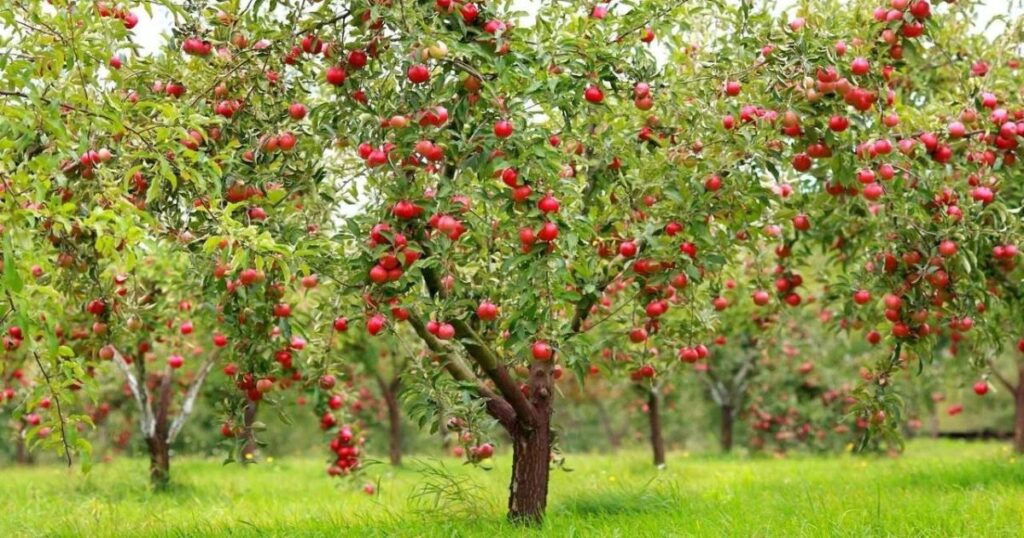 Sustainability and environmental impact focus on how human activities affect the planet and the measures taken to reduce negative consequences. Sustainability means meeting present needs without compromising the ability of future generations to meet their own needs. It emphasizes the responsible use of natural resources, minimizing waste, and promoting renewable energy sources. Environmental impact refers to the effect that actions, such as manufacturing, agriculture, transportation, and consumption, have on ecosystems, air and water quality, biodiversity, and climate change.
Sustainability and environmental impact focus on how human activities affect the planet and the measures taken to reduce negative consequences. Sustainability means meeting present needs without compromising the ability of future generations to meet their own needs. It emphasizes the responsible use of natural resources, minimizing waste, and promoting renewable energy sources. Environmental impact refers to the effect that actions, such as manufacturing, agriculture, transportation, and consumption, have on ecosystems, air and water quality, biodiversity, and climate change.
By adopting sustainable practices, individuals, businesses, and governments aim to reduce pollution, conserve habitats, and lower greenhouse gas emissions. This holistic approach helps protect the earth’s delicate balance, ensuring healthy environments and resources for the future. Ultimately, sustainability and minimizing environmental impact are crucial for fostering resilient communities, preserving biodiversity, and addressing global issues such as resource depletion and climate change. They encourage innovation, ethical decision-making, and a commitment to long-term ecological health.
Organic and Regenerative Orchard Management
Organic and regenerative orchard management emphasizes the cultivation of fruit trees using natural, eco-friendly practices that foster soil health, biodiversity, and long-term sustainability. It avoids synthetic chemicals, relying instead on organic fertilizers, compost, and natural pest control methods. Regenerative approaches take it a step further by enhancing the orchard ecosystem—improving soil structure, increasing carbon sequestration, and promoting beneficial insects and microorganisms. This holistic method supports resilient trees, healthier fruit, and a thriving environment. By prioritizing the earth’s natural cycles, organic and regenerative orchard management helps create sustainable food systems that benefit farmers, consumers, and the planet alike.
Conclusion:
Growing orchard trees is more than planting and waiting. It’s a long-term investment that rewards patience, learning, and care. Whether you dream of harvesting baskets of apples, jars of homemade jam, or simply enjoying the beauty of blossoms in spring, orchard trees bring life and productivity to any plot of land. By comparing different fruit trees, understanding your climate and soil, and applying consistent maintenance, you can cultivate an orchard that feeds you, your family, and future generations.
FAQ:
What is an Orchard Tree?
Orchard trees are fruit-bearing trees cultivated in a planned arrangement for commercial or personal fruit production. Examples include apple, peach, cherry, and pear trees.
How do Orchard Trees Differ from Regular Garden Fruit Trees?
Orchard trees are typically planted in large numbers and managed intensively to achieve high fruit yields and quality. In contrast, garden fruit trees are often grown on a smaller scale, mainly for personal use.
What Factors should I consider when Choosing Orchard Trees?
Consider climate suitability, soil type, space availability, disease resistance, pollination needs, and fruit market demand.
What are the Main types of Orchard trees Commonly Grown?
Common orchard trees include apples, pears, cherries, peaches, plums, citrus fruits, and nut trees such as walnuts and almonds.
How Necessary is soil Preparation for Orchard trees?
Very important. Good soil drainage, a proper pH balance, and adequate nutrient content ensure healthy root development and optimal fruit productivity.



